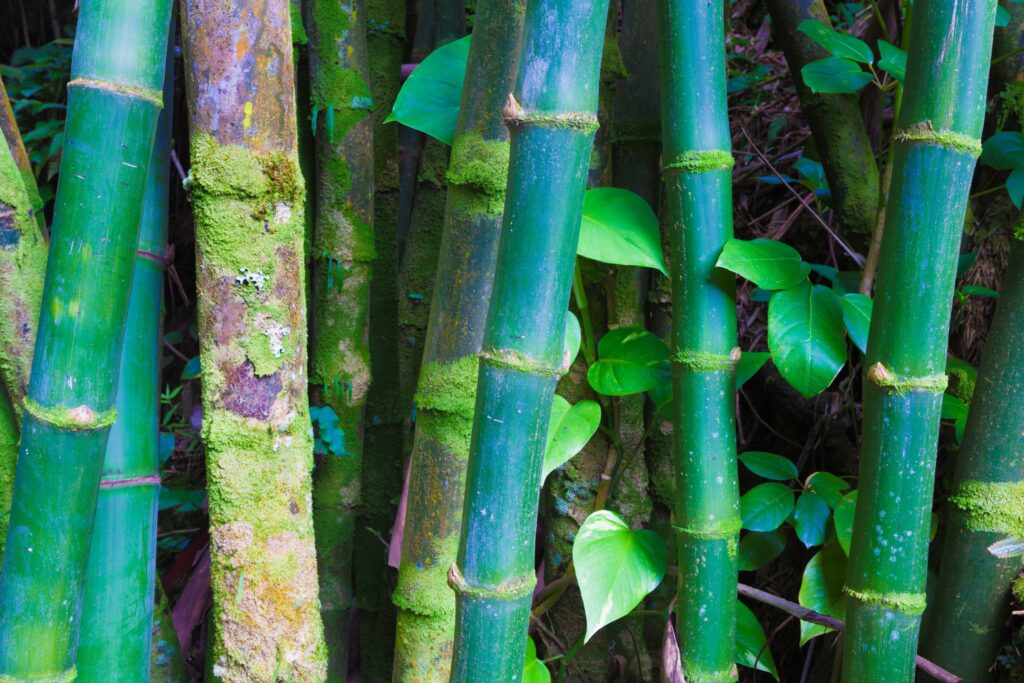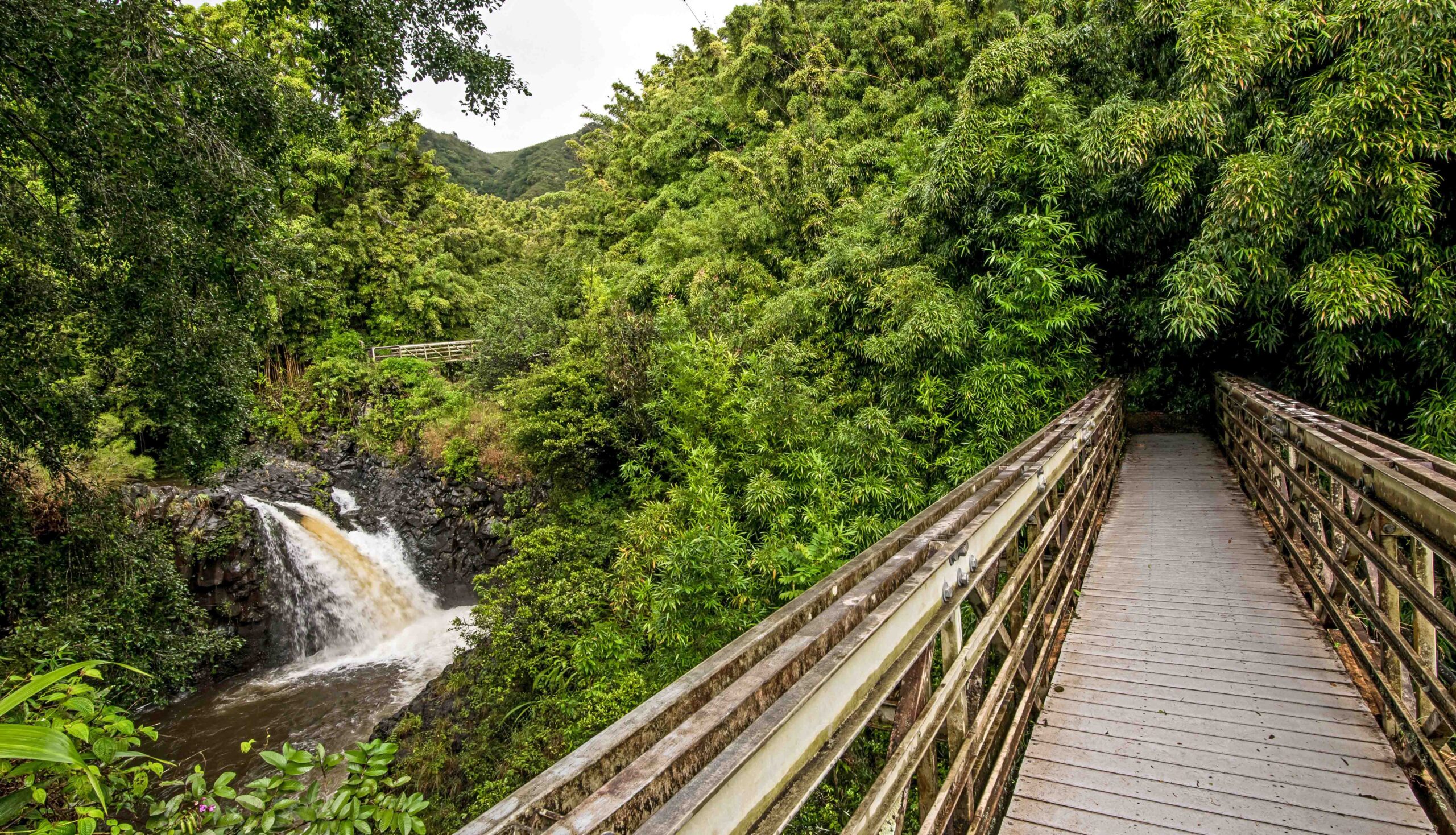East Maui Watershed Beautiful Source of Life

Watersheds: A Source of Life on Maui
Any conversation about water at Haleakala, Maui, or the Hawaiian Islands in general must start with watersheds. In ecological terms, a watershed is an intricate network of streams, rivers, gulches, and other waterways that each drain one “side” of the land, from mountaintop to coast. Watersheds on each island sustain an incredible variety of wildlife, not to mention the freshwater needs of the residents and visitors. The island of Maui as a whole boasts multiple watersheds that are a valued source of life for the island. The East Maui Watershed, which includes Haleakala National Park, covers an area of 100,000 acres and generates 60 billion gallons per year for East Maui’s residents. This means that each day, more than 160 million gallons of water are siphoned from rivers and streams to homes and industries across the island by means of an irrigation system. Just imagine three million bathtubs full of water, and you’ll have sense of how much water we’re talking about . . . every single day. The organization Maui Tomorrow has estimated the monetary value of all this water to be about $58 million per year, not including tourist dollars it helps to generate.  At Haleakala National Park, the East Maui Watershed primarily manages the flow of the park’s liquid treasures. In fact, Haleakala is one of the wettest areas on the island of Maui; over 400 inches of rain fall annually here, filling streams that hydrate 8,000 acres of rainforest. For size comparison, this is an area about one-third the size of the Walt Disney World Resort. Many species of wildlife migrate up and down the watershed during their life cycle. Flora and fauna alike depend on its flow for life and vitality. And our human visitors love it, too.
At Haleakala National Park, the East Maui Watershed primarily manages the flow of the park’s liquid treasures. In fact, Haleakala is one of the wettest areas on the island of Maui; over 400 inches of rain fall annually here, filling streams that hydrate 8,000 acres of rainforest. For size comparison, this is an area about one-third the size of the Walt Disney World Resort. Many species of wildlife migrate up and down the watershed during their life cycle. Flora and fauna alike depend on its flow for life and vitality. And our human visitors love it, too.
Enjoying Popular East Maui Watershed Destinations
One of the most popular areas of the watershed for visitors to Haleakala is ‘Ohe’o Gulch, home of Maui’s second largest perennial stream, Palikea. This mist-enshrouded paradise, known for cascading waterfalls and the famous Seven Sacred Pools, shelters many different varieties of fish and wildlife. Watch for 'o'opu, a mottled gray fish that wiggles up the rocks; 'o'pae, an electric-orange crustacean; and hihiwai, a shiny black water snail. Along the banks, visitors can see exotic plant species such as rainforest mosses, guava and banyan trees, ginger and even a bamboo forest. If you love to hike, then don’t miss a chance to visit Palikea while you are visiting Haleakala! Many visitors call this stop the highlight of their visit. Consider a partial or day hike up the Pipiwai Trail, which runs alongside Palikea. Just be sure to take a friend along, as the trails are secluded and not recommended for the claustrophobic or those with mobility challenges.  Those with moderate athleticism and an adventurous spirit will not only enjoy seeing the stream, but also will be rewarded at the top by stunning views of Waimoku Falls. Along the way, don’t forget to breathe in the cool rainforest mist and watch for Kahuli Tree Snails—three-quarter-inch long snails that cling to tree branches and leaves. Just be sure to wear hiking boots, allow time for rests, and bring plenty of water and snacks. For those seeking a less strenuous experience, consider a swim in ranger-approved swimming holes at the Seven Sacred Pools. Some popular swimming areas close on occasion, so check the national park website before making plans to go for a swim. Also, obey all posted signs because they are there for your safety. Be prepared for water temperatures that might be colder than expected, even in summer. Also check on National Park Service sunscreen recommendations, as certain types of sunscreen may damage wildlife and are not recommended for use in these pools. For more information on hiking, swimming and wildlife spotting on the Pipiwai Trail, check out the visitor guide. Camping can also be reserved at the nearby Kapahulu Campground.
Those with moderate athleticism and an adventurous spirit will not only enjoy seeing the stream, but also will be rewarded at the top by stunning views of Waimoku Falls. Along the way, don’t forget to breathe in the cool rainforest mist and watch for Kahuli Tree Snails—three-quarter-inch long snails that cling to tree branches and leaves. Just be sure to wear hiking boots, allow time for rests, and bring plenty of water and snacks. For those seeking a less strenuous experience, consider a swim in ranger-approved swimming holes at the Seven Sacred Pools. Some popular swimming areas close on occasion, so check the national park website before making plans to go for a swim. Also, obey all posted signs because they are there for your safety. Be prepared for water temperatures that might be colder than expected, even in summer. Also check on National Park Service sunscreen recommendations, as certain types of sunscreen may damage wildlife and are not recommended for use in these pools. For more information on hiking, swimming and wildlife spotting on the Pipiwai Trail, check out the visitor guide. Camping can also be reserved at the nearby Kapahulu Campground.
Conserving the Watersheds
Unfortunately, not everything about the East Maui Watershed is as idyllic as Palikea Stream. Many of Maui’s pristine fresh waters have now been ecologically impaired by environmental toxins. Runoff from urban areas and local tourist accommodations often proves the culprit in these cases.  Some concern also exists over whether the East Maui Watershed can sustain the continued explosion of water usage among Maui’s human residents. At Skyline Hawaii, we are proud to be partnering with worthy conservation efforts to clean up these streams and ensure the entire East Maui Watershed flows pristine for future generations.
Some concern also exists over whether the East Maui Watershed can sustain the continued explosion of water usage among Maui’s human residents. At Skyline Hawaii, we are proud to be partnering with worthy conservation efforts to clean up these streams and ensure the entire East Maui Watershed flows pristine for future generations.
About the Author: Skyline Hawai’i is committed to the preservation of Hawaii’s landscape and culture, and we want as many people as possible to experience the natural wonder of the Hawaiian Islands. Learn more about our conservation efforts: www.skylinehawaii.com.
